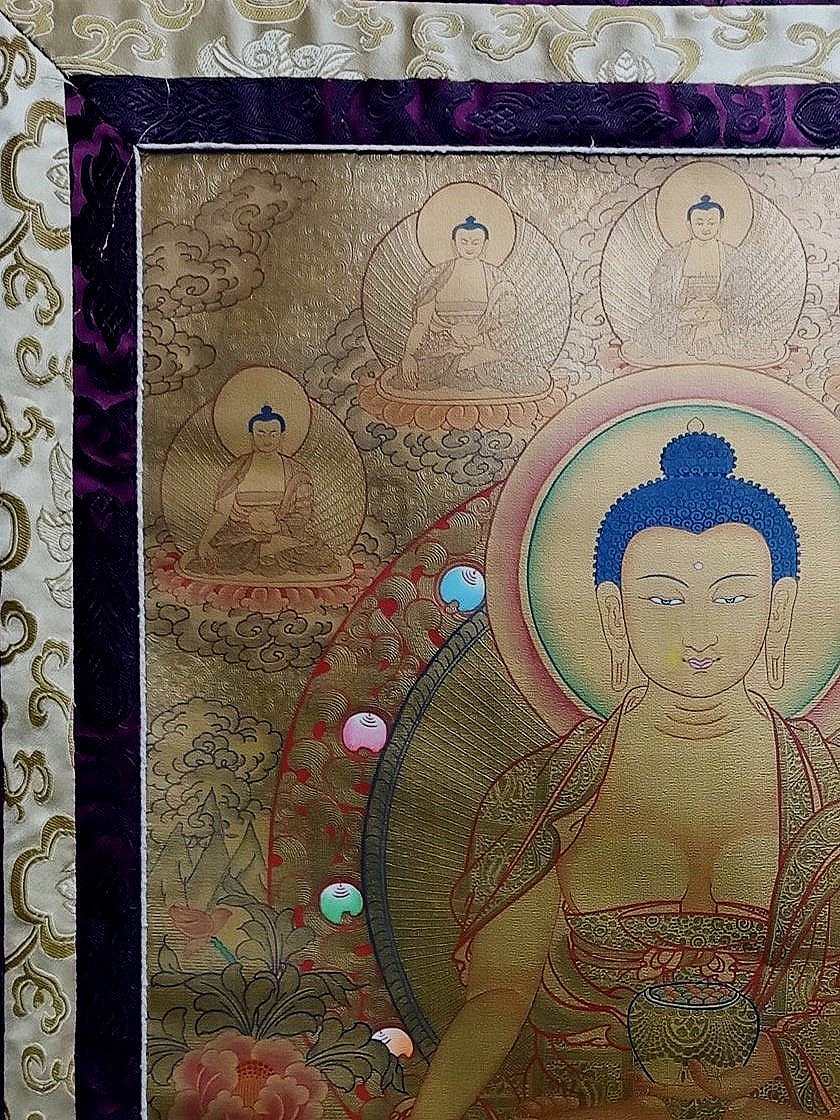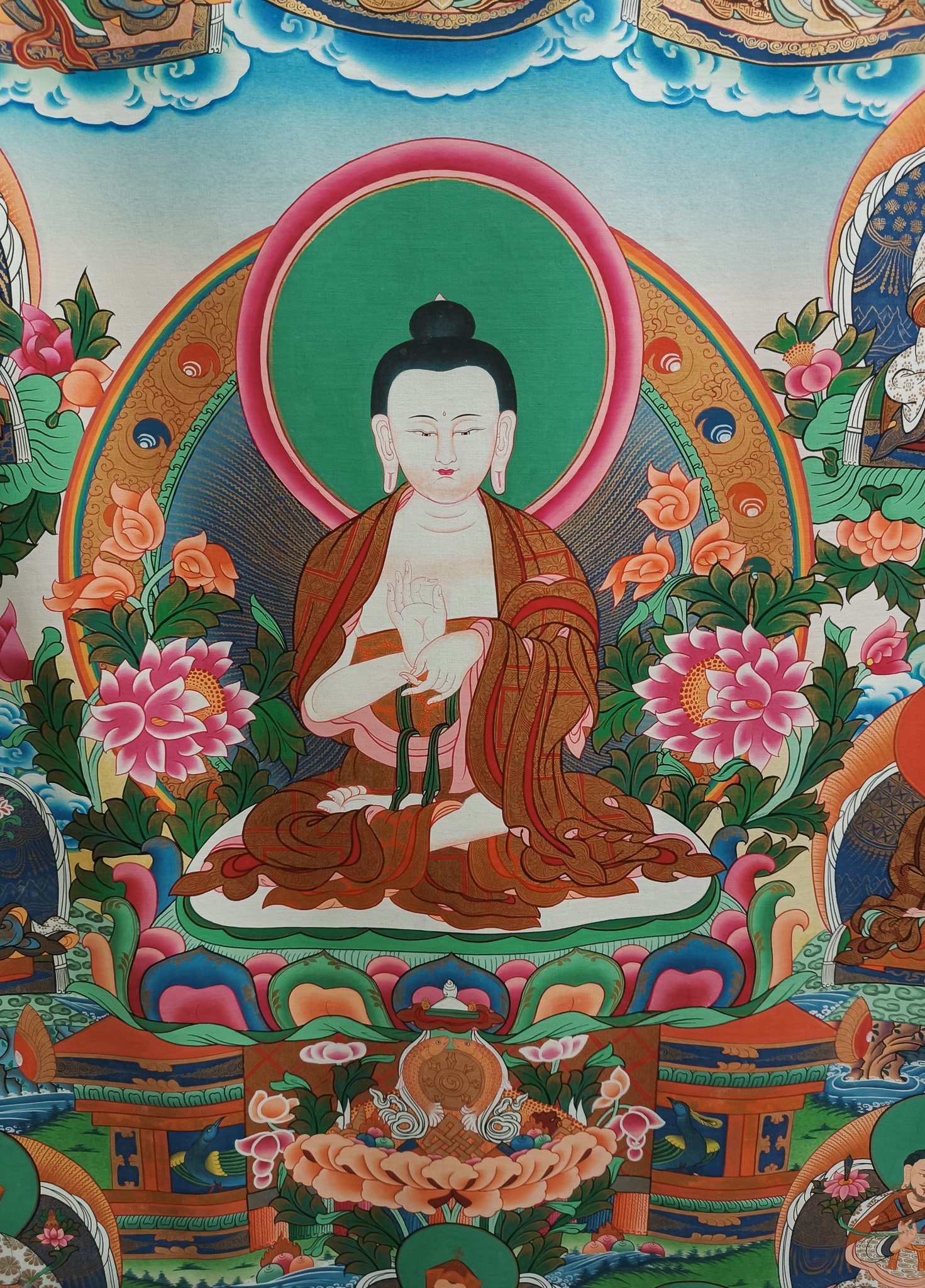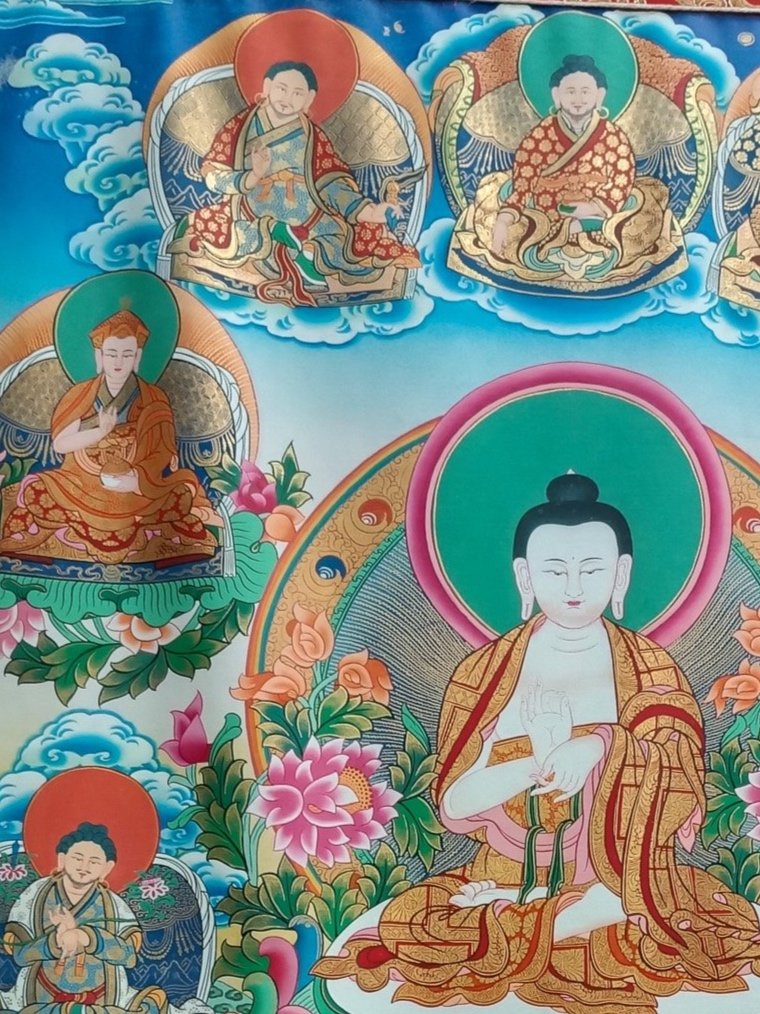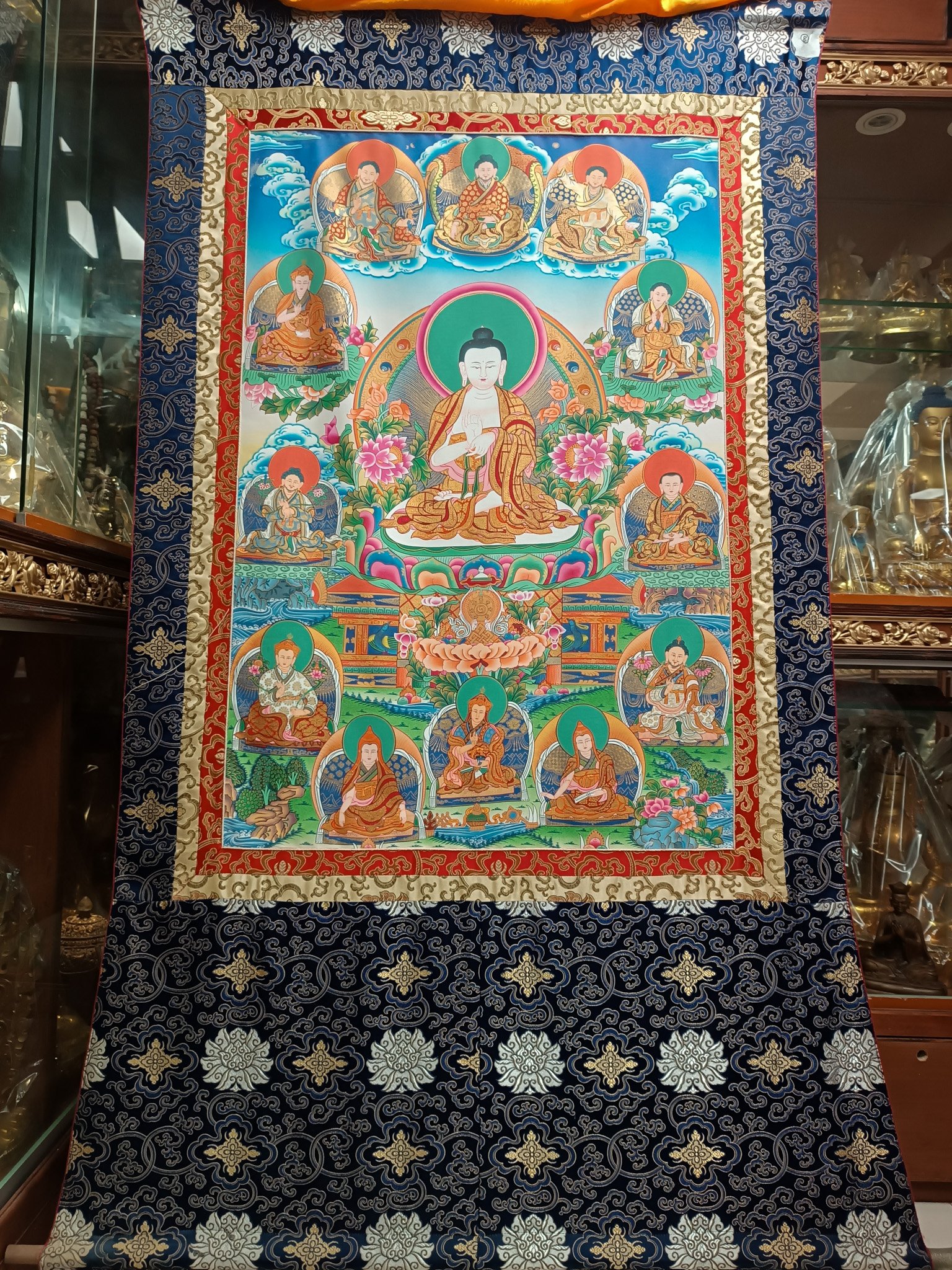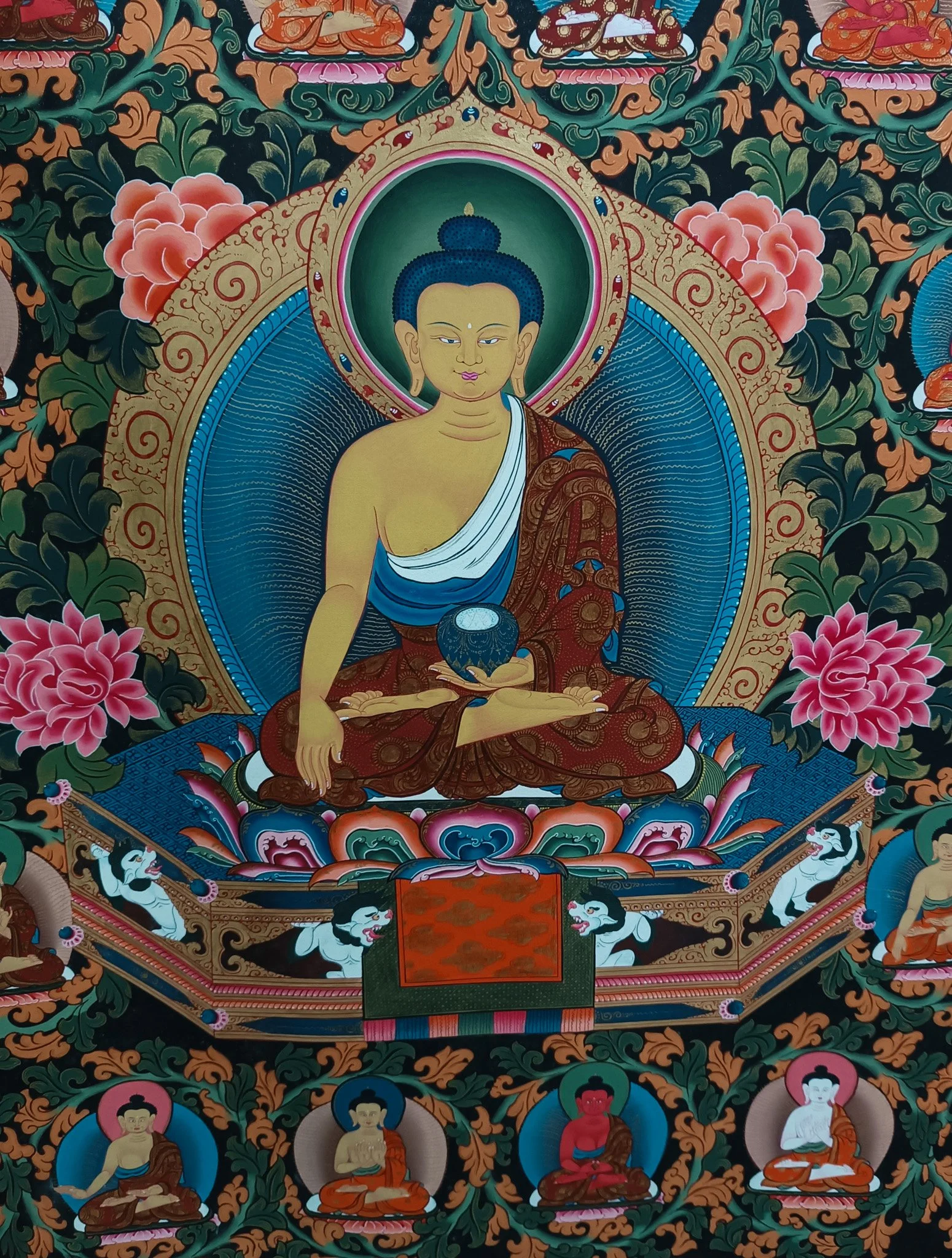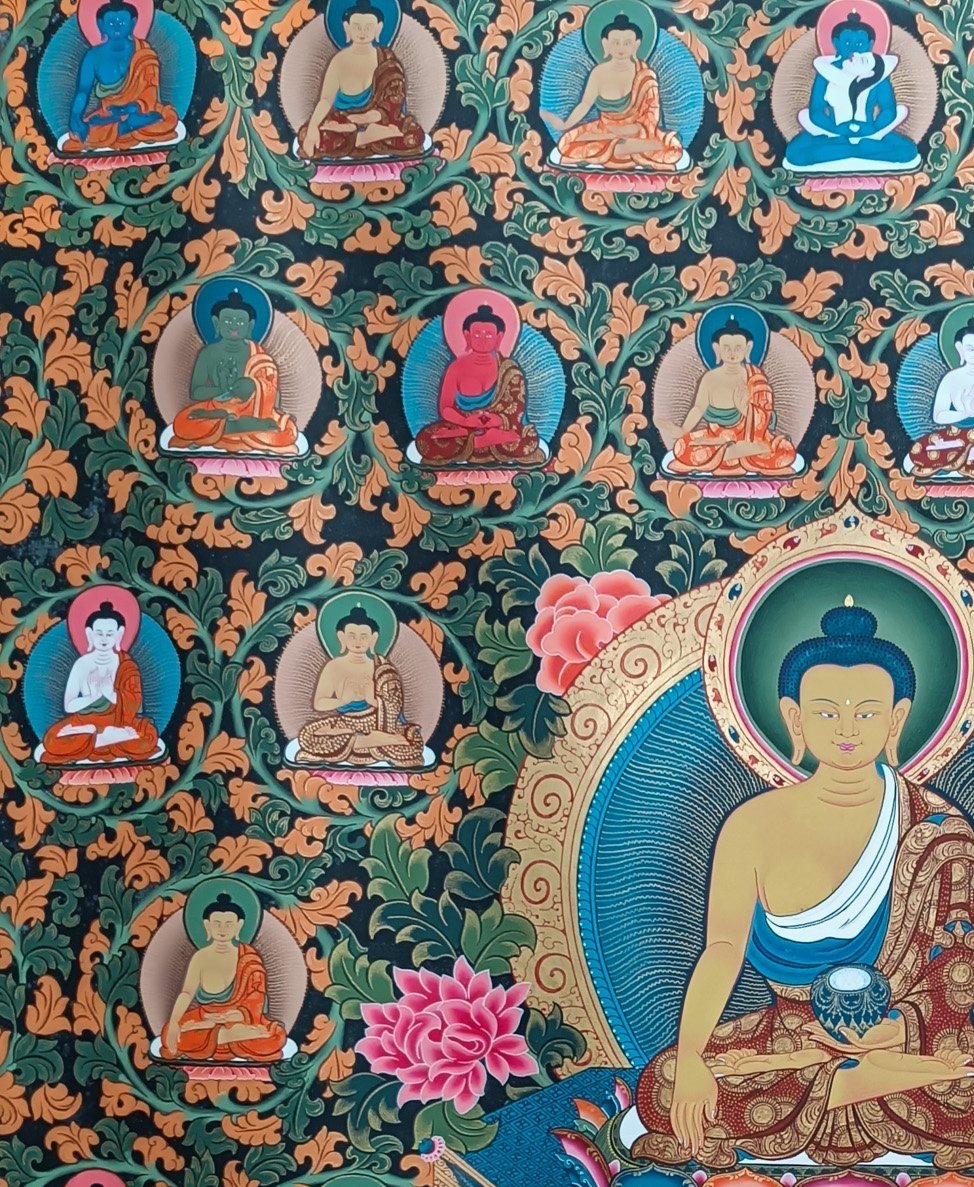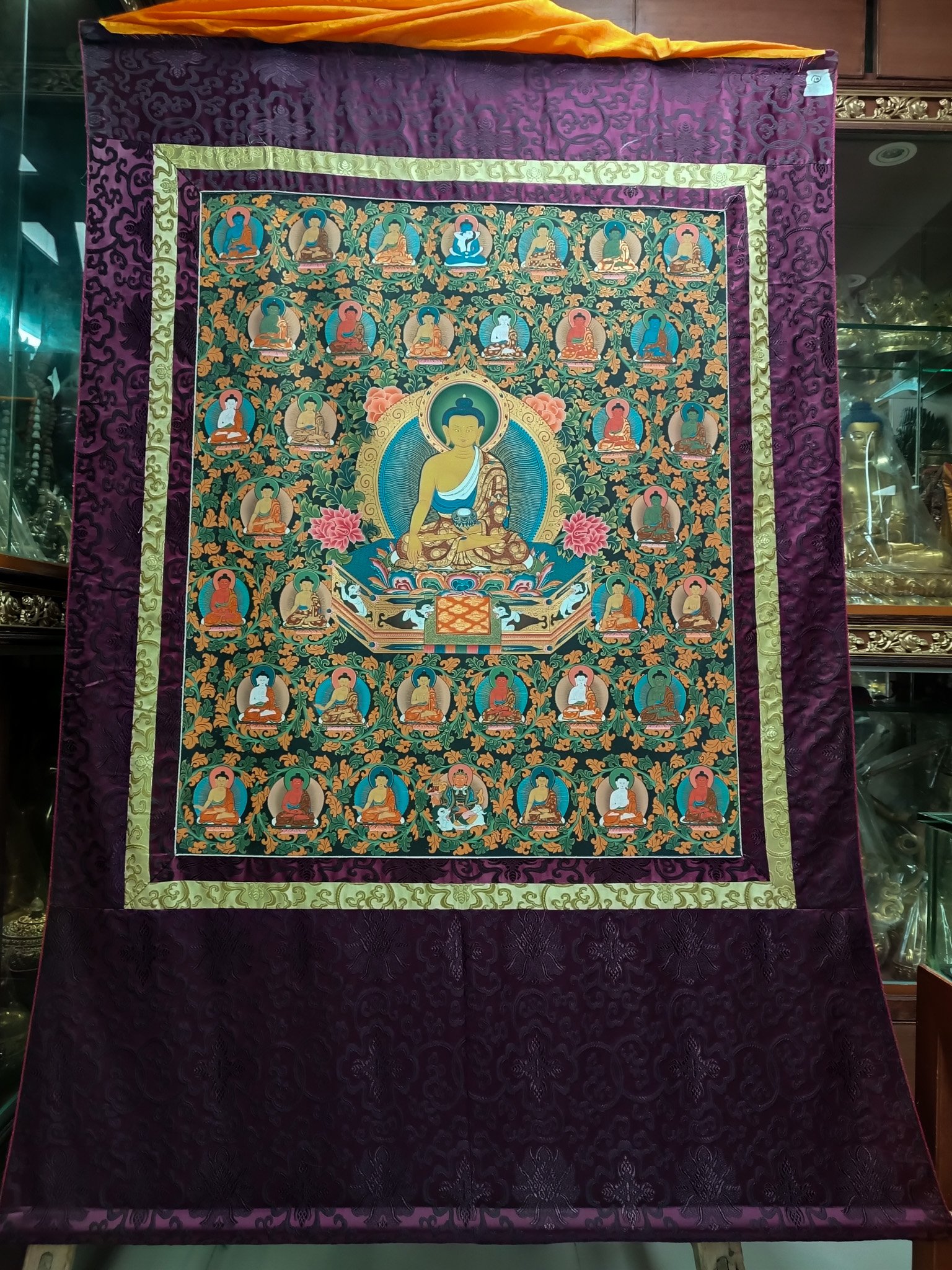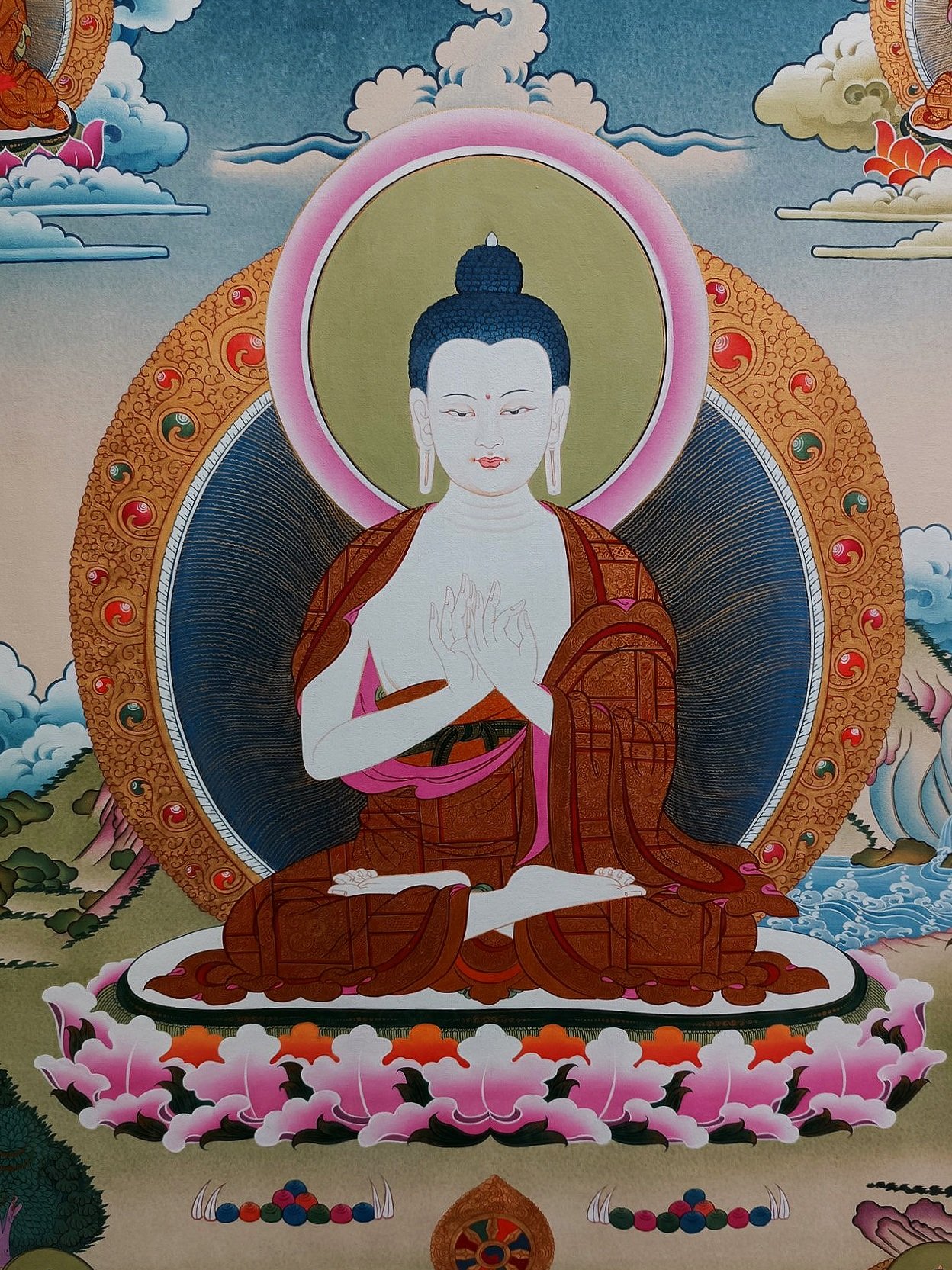 Image 1 of 4
Image 1 of 4

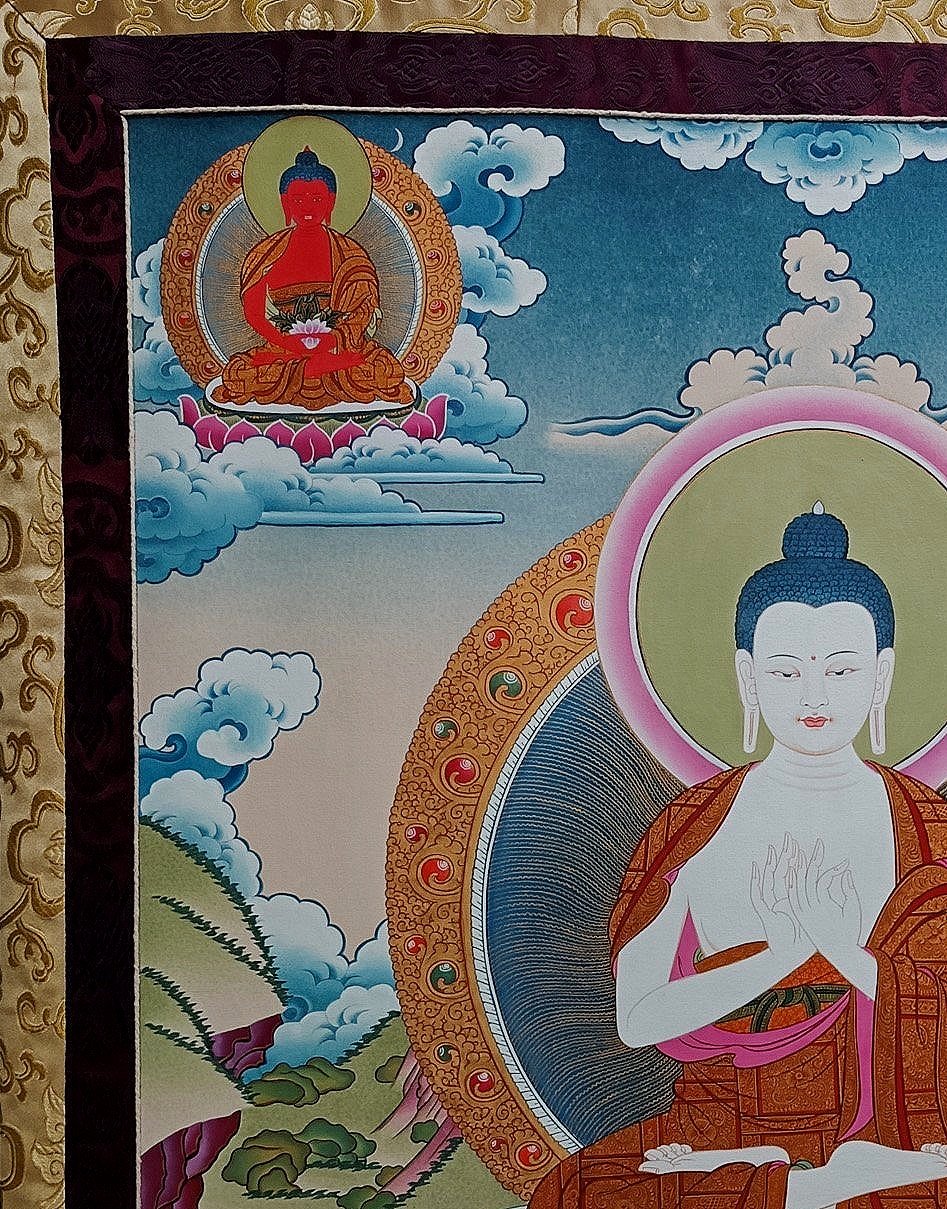 Image 2 of 4
Image 2 of 4

 Image 3 of 4
Image 3 of 4

 Image 4 of 4
Image 4 of 4





Five Buddha; སངས་རྒྱས།; 佛陀
Vairochana, the Dhyani Buddha, represents the element of 'rupa' (shape or form). He is depicted in white, meditating on a lotus seat to teach the Dharma and combat ignorance.
Amoghsiddhi, represented in green, faces the north. He wields a double thunderbolt (vajra) to dispel fear, envy, and jealousy while providing courage and wisdom, symbolising the summer season.
Ratnasambhava is depicted in gold or yellow and faces south. He is known for bestowing blessings, enrichment, joy, and calmness upon mortals, representing the autumn season.
Amitabha is represented in red and faces west. Known as the Buddha of eternal life, he possesses the quality of overpowering and conquering mortals. He is associated with fire, and his symbol is a lotus.
Akshobhya is depicted in blue and faces east. His symbol is a thunderbolt (vajra), and his domain is water. He provides wisdom and knowledge to mortals, fosters humility, and reduces aggression, symbolising the winter season
Hand-painted in Nepal.
The natural pigment painting measures 30 Inches by 22 Inches, with an additional silk Thangka bordering it.
Vairochana, the Dhyani Buddha, represents the element of 'rupa' (shape or form). He is depicted in white, meditating on a lotus seat to teach the Dharma and combat ignorance.
Amoghsiddhi, represented in green, faces the north. He wields a double thunderbolt (vajra) to dispel fear, envy, and jealousy while providing courage and wisdom, symbolising the summer season.
Ratnasambhava is depicted in gold or yellow and faces south. He is known for bestowing blessings, enrichment, joy, and calmness upon mortals, representing the autumn season.
Amitabha is represented in red and faces west. Known as the Buddha of eternal life, he possesses the quality of overpowering and conquering mortals. He is associated with fire, and his symbol is a lotus.
Akshobhya is depicted in blue and faces east. His symbol is a thunderbolt (vajra), and his domain is water. He provides wisdom and knowledge to mortals, fosters humility, and reduces aggression, symbolising the winter season
Hand-painted in Nepal.
The natural pigment painting measures 30 Inches by 22 Inches, with an additional silk Thangka bordering it.




